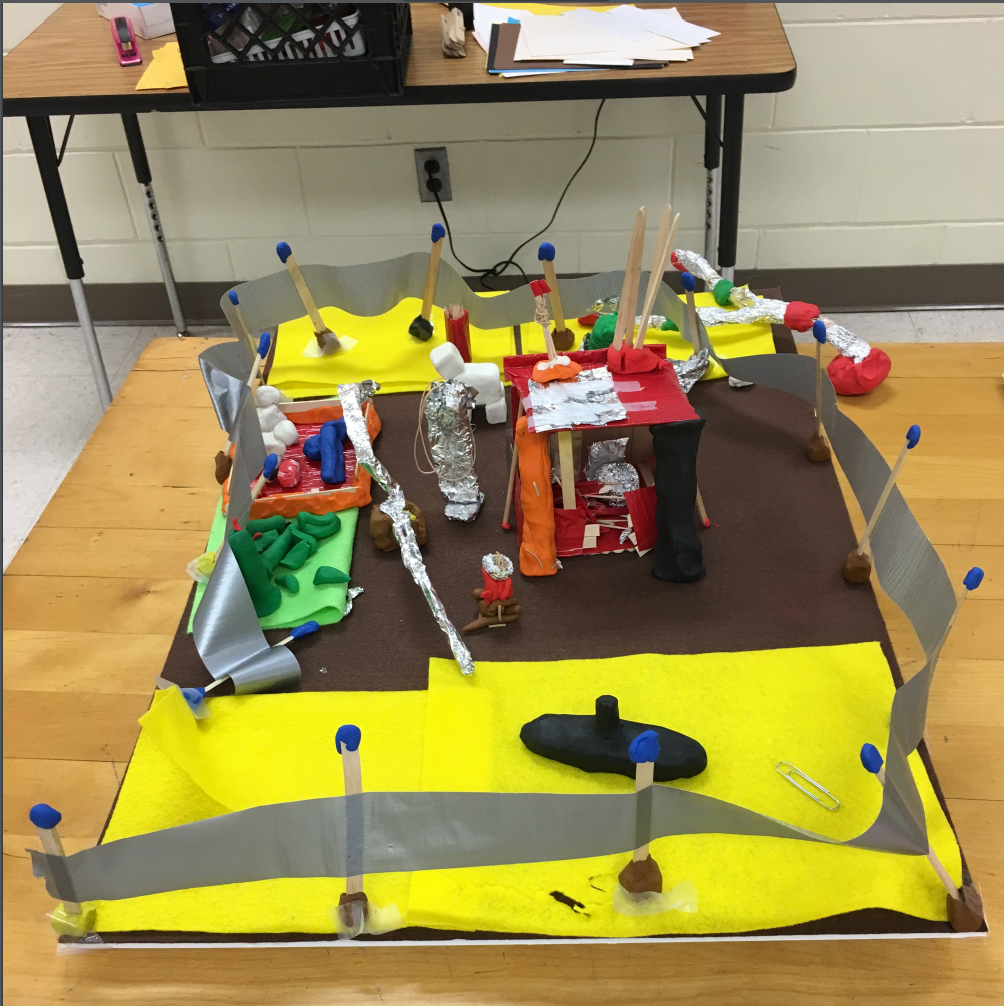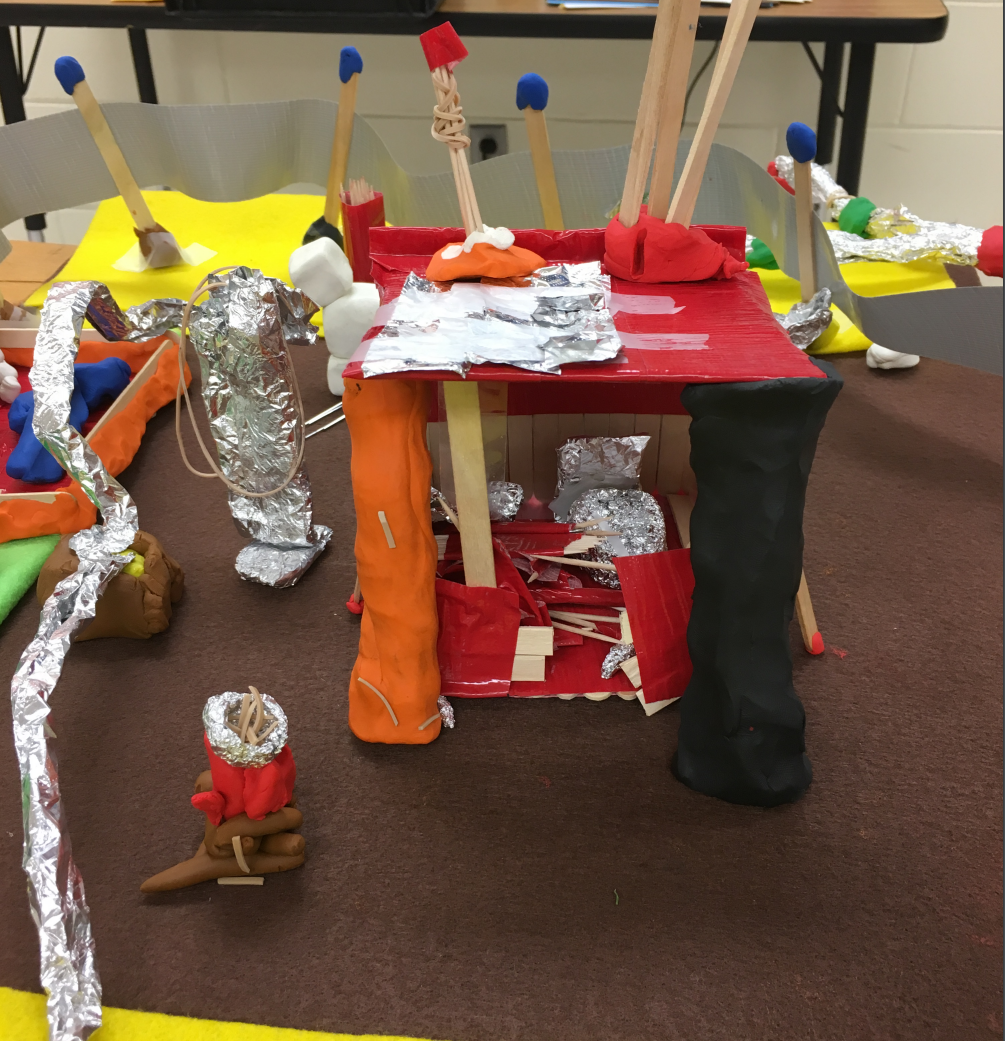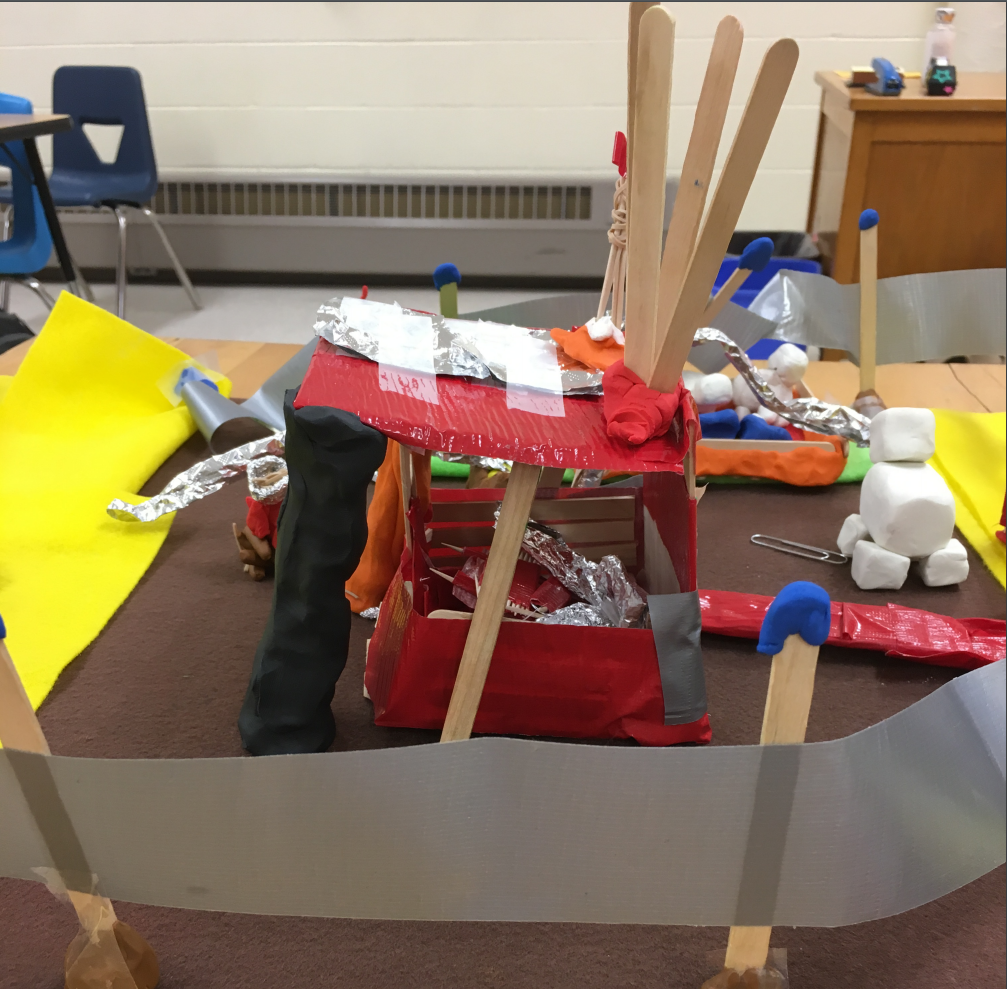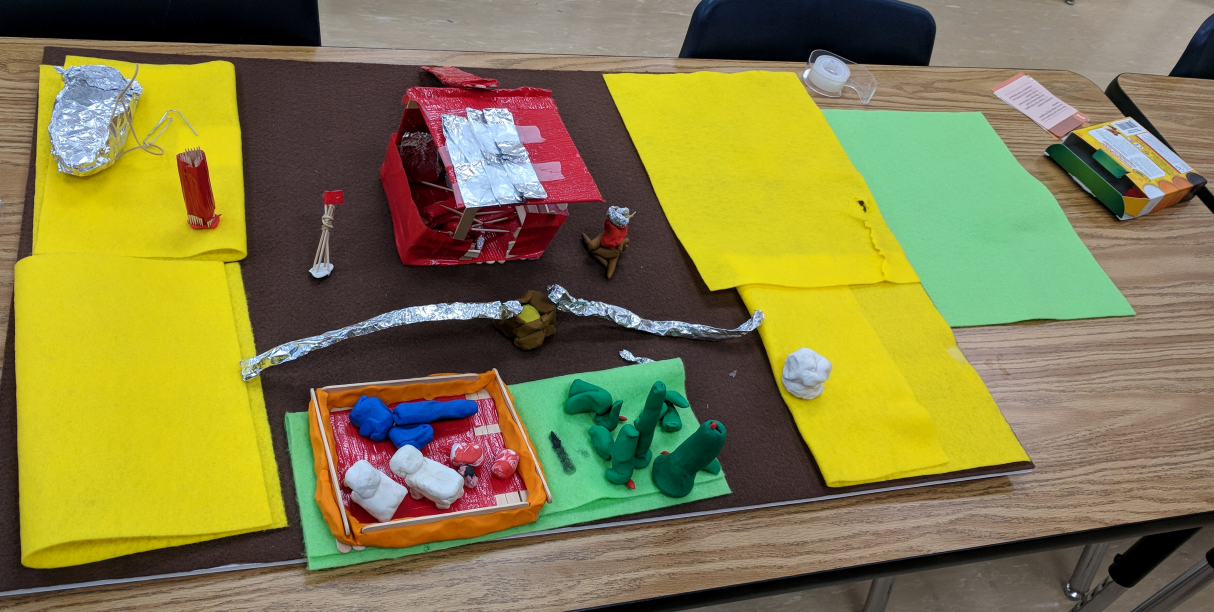Mind Craft
University of Nebraska- Lincoln Digital Commons - Honors Club
Mind Craft
By: Dana Hoppe, Alison Cloet, Mickey Tran, & Caleb Kowalsk Copyright 2018 by Alison Cloet, Dana Hoppe, Caleb Kowalsk, and Mickey Tran under Creative Commons Non-Commercial License. Individuals and organizations may copy, reproduce, distribute, and perform this work and alter or remix this work for non-commercial purposes only.
WELCOME
Welcome to the facilitator guide of the Mind Craft program.
This is approximately an 8 week program, depending on the
pace of your group.
Loosely based off of popular games like SimCity and Minecraft, is a program that allows students to create their
own communities and build up their society from scratch using
hands on activities. Each week a task is given to them to build
their society. It will start o from scratch where they have to
think of tools that enable building a society, and by 8th week,
they’ll have functioning buildings and rules.
This program aims to touch base on skills involving art,
engineering, and teamwork interaction. By the end of each
session, students should have used skills involving teamwork,
leadership, and creativity.
This is an incremental program where students will be building
on top of their project. It would be ideal to have a place to store
their project as they continue growing it. It may be possible to
disassemble the project if needed though.
FOUNDATIONAL PROGRESSION
- FOOD
- SHELTER
- TOOLS
- DEFENSE
- LAW
- DISASTER
- CULTURE
- TRADE
Facilitator's Responsiblities
As a facilitator, you have the desire to help students thrive on their own creativity by guiding them through a productive environment.
Your tasks include:
* Introduce and discuss the task of the week
* Split up the students into at least 2 groups for their community
* Ensure students use appropriate behavior that will not
negatively impact each other’s learning
* Gather supplies necessary for each weekly session
* The potential supplies are just suggestions to complete each
task, so get creative with different supplies students can use!
* Think of possible scenarios for each session and overall
program*.
*This program was purposely to be made vague in its instructions in order to allow students the ability to think creatively without restrictions. Thus, there most likely will be questions and concerns about the limits and requirements put on for each session. The facilitator thus has the option to put any limits or requirements that they see fit. This allows for the program to be versatile.
Structure:
Each week, students are given a structured guide they follow in their booklet. It goes as follows.
Week [ number]: [Theme of the Week]
[Purpose]
[Things to Think About]
Number: There are 8 weeks put into this guide, however, it can be split however best fits the group.
Theme of the Week: This title gives a brief overview of the activity the students will be doing.
Purpose:
The purpose will be bolded giving the prompted task asked of the student to complete by the end of the session. It goes into the role of the student as an innovator, challenging the student to figure out a way to do the task.
Things to Think About:
These are prompts to help guide the students through their task. Questions are asked to get the students thinking of how they want to accomplish the prompt. Facilitators can use this as an open discussion as students work on the project or have them answer it individually.
Presentation:
At the end of each session, it is encouraged to let the students present their work. This can help them develop their public speaking skills and encourage a sharing of ideas.
Goal:
Students have an understanding of the purpose of the program and their role.
Guidance:
The students are in a ‘deserted’ area. Their goal is to create a community within this area. You are able to give them as specific or general of a location. Almost every session will ask students to create objects to show their off their creativity. It is recommended to make these model size for easy storage and cheap material. You could also have the students create model size miniatures to enhance the experience of their models.
Samples of possible models are shown below.
Key terms are introduced in this session. Make sure the
students understand the key terms through group discussion
or exercises.
TOOLS
As you explore your new
habitat, you realize
something….where is the
food? The shelter? Water?
You need each of these to
survive, but in order to
gain them you must first
build tools to defend
yourself and your
community.
Task: Create one 3D model for each
tool you design using the supplied
materials.
Questions to consider:
1) To grow food, what supplies
and tools would you need?
2) What types of tools are used
to build a shelter?
3) How would you defend your
community if it were threatened?
SHELTER
Last night, a rainstorm
came through and soaked
all of your community,
making everyone
miserable. As you walk
around in soggy clothes
the next day, you all agree
today is the day to start
building shelter. Luckily,
you now have the tools to
accomplish this.
Task: Build 3D models of homes and agree on a community layout using the styrofoam sheet provided.
Questions to consider:
1) Which materials will you
choose?
2) How many floors does it
have? Windows? Doors?
3) How will it protect you from
the weather?
FOOD
You’ve been eating berries
from bushes you found,
but now are famished
from building and need a
real food supply to sustain
yourself and the
community. You have the
seeds to grow the food; all
you need to do is put
them into action.
Task: Look back on the tools you built in Phase 1 and implement them to grow food to ensure the community prospers.
Questions to consider:
1) What type of garden will you
have? Where will it be located?
2) Which types of food might
grow best in your environment?
3) Is there certain produce that
produces an abundant harvest?
4) How will you water your food?
Is there a water source nearby?
DEFENSE
Everyone is content and
the community is thriving;
however, you wake up
one morning to find
spoiled crops in the
garden. It seems there has
been an animal invasion.
To prevent this from
happening again, you’re
going to need to defend
your community.
Task: Build a defense around your community and place it on your community model.
Questions to consider:
1) What types of protection can
you implement to keep pests out?
2) What are the best materials
to use to build your defense?
3) Should you create a plan of
action if there were another
invasion?
LAW
Disputes have been
growing among members
of the community and the
unity that was strong in
the beginning is starting
to fade. To pull everyone
back together, perhaps a
meeting center and set of
laws might hold everyone
accountable to getting
along again.
Task: Collectively design and build a 3D model of a meeting center. As well, agree on a set of laws and create an official document for them.
Questions to consider:
1) Can you think of a meeting
center in your own community?
2) Where will the meeting center
be located within the community?
3) How will people know it’s your
meeting center? Is there a sign?
4) What laws are needed to
ensure fairness and order?
DISASTER
One day, a severe natural
disaster rips through the
community, resulting in
heavy damage to buildings
and the land. It appears
you’re going to need to
repair this week and
brainstorm ways to fortify
the community so you’re
ready when the next
disaster strikes.
Task: Clean up the community and repair the damages while improving the strength for better protection.
Questions to consider:
1) Why didn’t the damaged
buildings survive? Were the
materials too weak?
2) What types of natural
disasters are common in your
environment?
3) Do you need to build any
protective coverings?
CULTURE
Your community has
developed so much from
when you first arrived and
is flourishing, but there
isn’t anything very special
about it. How will you
expand the community if
newcomers find it too
dull? When others think
of your community, you
want it to be known for
something.
Task: Establish unique aspects for your community.
Questions to consider:
1) What are some cities or
towns you hear about? What are
they known for?
2) What attractions might your
community have?
3) Is there a flag or community
logo? What about landmarks?
TRADE
You’re finding that other
communities seem to be
doing better in areas that
you’re not, and vice versa.
They might be more
efficient in growing a
certain food, but you
might be stronger builders.
A community cannot
sustain itself alone, so the
solution here is trade.
Task: Exchange skills and supplies with other communities to build each other up.
Questions to consider: 1) What is a fair exchange? How do you mutually agree on it? 2) What can you offer to other communities? What can they offer to you? 3) What are your top priorities for expanding the community? What might you need for them?
EXAMPLES:

Example 1

Example 2

Example 3

Example 4
Follow this and additional works at: http://digitalcommons.unl.edu/honorshelc
Part of the Curriculum and Instruction Commons, Elementary Education Commons, and the Higher Education Commons
This Portfolio is brought to you for free and open access by the Honors Program at DigitalCommons@University of Nebraska - Lincoln. It has been
accepted for inclusion in Honors Expanded Learning Clubs by an authorized administrator of DigitalCommons@University of Nebraska - Lincoln.
Hoppe, Dana; Cloet, Alison; Tran, Mickey; and Kowalsk, Caleb, "Mind Craft" (2018). Honors Expanded Learning Clubs. 13.
http://digitalcommons.unl.edu/honorshelc/13